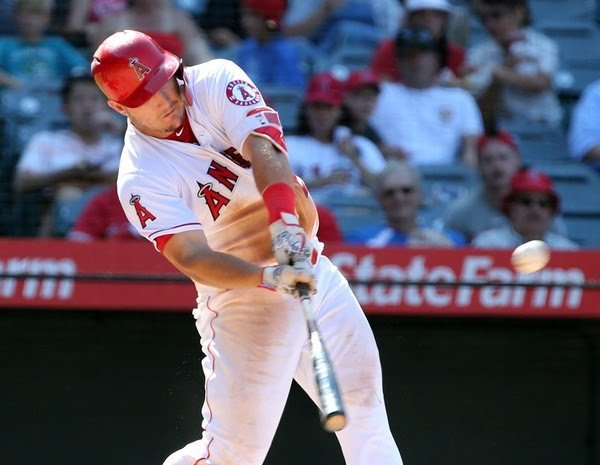
*Disclaimer: There is a key at the bottom of the article for unspecified stats and acronyms. For those, who don’t know baseball stats too well, looking at the key beforehand will give better context for the article.
In my last article, I came to the conclusion that extensions were better for players because they give players financial security, and are usually near market value. However, an elite player under the age of thirty should bet on himself, and can make a lot more money on free agency. The five worst extensions are examples of clubs overestimating a players’ value. As a result, they got an expensive extension turned out way better for the player than their respective clubs. On the other hand, the five best extensions were all elite players that if they bet on themselves could have potentially made a lot more in free agency.
Also, the way these five worst and best extensions were determined was through a stat called $/fWAR. Where 1 fWAR (Fangraphs version of WAR) is worth $8 million. For example, if a player signed a two-year contract worth $16 million, and had a 2 fWAR during the contract, he would have been worth exactly the value of the contract he signed. Therefore, if the player receives a positive value that means the player was worth more than his contract entailed (“a good extension”). Consequently, if the player receives a negative value than he was worth less than the contract entailed (“a bad extension”). After looking through the most prolific extensions since 2000 on MLB extension tracker, here are…
The Five Worst Extensions
- John Danks
The first-round pick, and 9th overall of the 2003 draft, Danks never even played a major league game with his selected team (the Rangers). Instead, he made his Major League debut with the White Sox in 2007. After a rough rookie year, Danks posted three straight season of sub-3.78 ERA. In addition, he eclipsed the 200 IP threshold twice, and was fifth in AL ERA in 2008. He also compiled a 14.7 fWAR in his first five seasons, making him an above average starter. The reward: a five-year/$65 million extension during 2012-2016. The result: was a paltry 2.3 fWAR. He also went 25-48 over that span. Thus, Danks was worth -$46.6 million during his time with the South Siders.
- David Wright
The future captain for the Mets was originally the 38th Overall pick in the 2001 draft. Wright will go down as one of the best Mets players’ ever. He was a 6x All-Star, 2x SS, 2x GG, 30-30 player in 2007, 6x 20+ HR seasons, 5x 100 RBI seasons, 4x 90 R+ seasons, 5x 40-2B seasons, 7x .300+ BA seasons, 5x .900+ OPS seasons, and 3x 20-SB seasons. Wright accomplished this before arguably the worst contract in Mets history. After the 2012 seasons, Wright signed a 7-year/$122 million deal (8-year/$138 million since the option was exercised). Wright just had one more All-Star season in 2013, and only two more seasons of playing in 100+ games (MLB season is 162 games) before succumbing to injuries for the rest of his career. The Mets let him play one last game in their final 2018 homestand, before releasing Wright for good. Unfortunately for the Mets, they still have to pay for large contract. Consequently, “Captain America” only compiled a 8.9 fWAR during his entire contract, which made him worth -$66.8 million during his extension.
- Homer Bailey
The first round pick, and 7th overall of the 2004 draft, Bailey made his major league debut with the Reds in 2007. After posting back-back seasons with a sub-3.70 ERA and 200 IP, Bailey received quite a large extension for a pitcher of his caliber. Despite only compiling 10.7 fWAR in his first seven seasons, Bailey net a 6-year/$105 million extension for the 2014-2019 seasons. Bailey has pitched horrifically. He has only compiled a 2.8 fWAR on his contract so far, and had a record of 1-14 last year. To make matters worse, after the 2014 season, Bailey never pitched an ERA lower than 5.56, so he certainly did not do the Reds any favors. As a result, Bailey is already worth -$83 million heading into the 2019 season.
- Felix Hernandez
The prized prospect from Venezuela, the slim 19 year old made his MLB debut with the Mariners in 2005. King Felix wasted no time being a fan favorite, as he had his own K’s corner in Safeco Field for putting up all his strikeouts. Hernandez became a 5x AS, 6x Mariners MVP, won two ERA titles, and reached the 200 IP mark a remarkable seven times. Furthermore, in his 2010 Cy Young campaign, he posted a miniscule 2.27 ERA with 249.2 IP and 232 strikeouts. Only 29 years old, Hernandez signed a lucrative 5-year/$135 million extension of his current extension in 2013. However, that extension did not take into effect until 2015. By that point, King Felix had already thrown over 2000 IP, and the toll certainly got to him. The former ace only had one more All-Star and 200 IP campaign, both in his 2015 season. Now the #5 starter for the Mariners, he’s only compiled a 4.2 fWAR in tune to being worth $-100 million during his extension so far.
- Miguel Cabrera
Another mega prospect from Venezuela, Cabrera made his MLB debut for the Marlins in 2003. Until 2014, Cabrera was a 10x AS, 6x SS, 2x AL HR leader, 4x AL Batting champ, 4x OBP leader, 2x SLG leader, 2x OPS champion, 2x RBI champion, and a World Series winner in 2003. The future first ballot hall of famer accumulated a ridiculous 65.4 fWAR in a eleven year span. Straight off a back-to-back MVP campaign, including the first Triple Crown in 1967 (leader in batting average, homers, and RBIs), Miggy net an 8-year/$248 million extension with the Detroit Tigers. His extension started in the 2016 season, and so far has had a 5.4 fWAR, one All-Star appearance, and one Silver Slugger. Derailed by injuries, and now becoming a full-time DH, if Cabrera doubles his WAR he will cost the Tigers -$161.4 million. If tripled Cabrera, would still cost the Tigers a ludicrous -$118.4 million.
Honorable Mentions: Joe Mauer’s 8-year/$184 million contract (-$42 million), Allen Craig’s 5-year/$31 million extension (-$31 million).
The Five Best Extensions
- Mike Trout
Most analysts would agree that “The Millville Meteor” is the best player in baseball, and will most likely go down with the all-time greats. The former 1st round, 25th overall pick in 2009, wasted little time making his mark at baseball’s highest level. After making his debut in 2011, had won the ROY in 2012, was a two-time AS, SS winner, lead the league in runs twice, lead the league in SB, and was also a 30-30 player in his first full season. He also accumulated 21 fWAR in a little over two seasons. On March 28th, 2014, Mike Trout signed a 6-year/$144.5 million extension that would start in the 2015 season. However, because of his recent 12-year/$426.5 million extension, the extension he signed in 2014 was really just a 4-year/$73 million contract. Despite this extension being quite expensive, and only lasting a short amount of time, Trout still makes this list. In fact, he was vastly underpaid for his incredible performance over the four-year stretch. He won an MVP in 2016, was a 4x AS, 3x SS, lead the league in runs in 2016, AS Game MVP in 2015, 3x OBP champ, 1x SLG champ, 3x OPS champ, and 3x 20-20 player. What was arguably most surprising is that he racked up a 35.7 fWAR, which made him worth an additional $213 million over that four-year stretch.
- Andrew McCutchen
The first round draft pick was selected 11th overall in 2005 by the Pirates. Between 2009-2011, McCutchen was already a 20-20 player, and a two-time All-Star. He also already had 14.2 fWAR before inking a 6-year/$51 million extension (7-year/$65.625 million with the 2018 option) before the 2012 season. McCutchen really started taking off during his extension. He was the 2013 MVP, once again becoming a 20-20 player to go with a .317/.493/508 slash line to the tune of a .911 OPS. To add on, he was a 4x SS, 1x GG, led the NL in hits, led the NL with a .410 OBP, and also had seven straight 20+ HR seasons. All those great seasons translated to 36.1 fWAR, and worth an additional $223 million over that span.
- Chris Sale
The 1st round draft pick, and 13th pick overall, was selected by the White Sox in 2010. Originally a reliever, Sale did not become a full-time starter until 2012. That year, Sale had his best season; he threw 192 IP, with a 3.05 ERA, and 190 strikeouts. In 2012 alone, Sale had an elite 4.8 fWAR, and a solid 6.5 fWAR within his first three seasons. Thus, the next year Sale was rewarded with a 6-year extension (option included) worth about $44 million. As a result, Sale had six straight seasons of sub-3.42 ERA, six straight seasons of batting average against of .233 or less (MLB average is about .250), was a 6x All-star, 4x 200 IP seasons, 6x 200 strikeout seasons (308 in 2017), 2x AL K champ, and was a World Series winner with the Red Sox last year. In that span, Sale had an fWAR of 34.7, which made him worth an additional $234 million over that span.
- Brian McCann
The former second round pick, was taken 64th overall by the Braves in 2002. When McCann reached the big leagues in 2005, he wasted little time becoming the next Braves superstar. In first season and a half, McCann had a remarkable 4.8 fWAR for an offensive first catcher. In 2006, he slugged 20 HRs, with a slash line of .333/.377/.572 in tune to a .961 OPS and his first of many All-Star appearances. Before the 2007 season, McCann inked a 7-year/$43.1 million extension (option and incentives included). McCann paid huge dividends for the Braves. He was a 6x All-Star, 4x SS, had six-20 HR campaigns, an OPS over .800 four times, an OBP over .350 four times, 2x 90 RBI seasons, 5x 70 RBI seasons, 3x 30 2B seasons, 5x 200 TB seasons, had less than 100 Ks each year, and three 7-WAR seasons. All these numbers are huge for a catcher, and translated to a 39.8 fWAR with an additional value of $277 million.
- Albert Pujols
Although Pujols tops this list, he was taken significantly lower in the draft than his counterparts, even though he has arguably the most successful major league career of the bunch. The former 13th round pick, taken #402 overall by the Cardinals was an absolute steal in the draft. In his first season Pujols was an instant star as he won the 2001 NL ROY award. In addition, his first three seasons were a clear indicator of what Pujols was fully capable of; 2x All-Star, three seasons of playing in at least 157 games, 3x 34 HR+ seasons, 3x 124+ RBI seasons, 3x 40+ 2B seasons. 3x .955+ OPS seasons, 3x .314 BA seasons, and led his league in 2B, AVG, and TB in 2003 all the while accumulating 22.1 fWAR over the three-year span. That net Pujols a monster 8-year/$112.6 million (option and incentives included) extension. Rightly dubbed “The Machine”, Pujols went on an incredible eight-year stretch. He was a 3x MVP, 7x All-Star, had six-7 WAR+ seasons, 3x 8+-WAR seasons, 2x WS champ, 4x Runs leader, 2x HR leader, 1x OBP leader, 3x SLG champ, 1x RBI champ, and 3x TB champ. During that span, he piled up an insane 59 fWAR, which values him at $359 million more than his contract value.
Honorable Mentions: David Wright’s 7-year/$68.4 million extension ($212 million), Corey Kluber’s 5-year/$38.5 million extension (>$161 million), Christian Yelich’s 7-year/$49 million extension (>$160 million), Jose Ramirez’s 5-year/$26 million extension (> $116 million),
Key:
R=Runs
GG= Gold Glove: The best fielder at each position in each league
AL= American League
NL=National League
SS=Silver Slugger: The best hitter at each position in each league
AS=All-Star
ROY= Rookie of the Year
TB= Total Bases (Single (1B)=1, Double (2B)=2, Triple (3B)=3, Home Run (HR)=4)/ AB (At Bats)
WS=World Series
WAR=Wins Above Replacement: A stat used to measure how many games a player helps his team win. A 0 WAR player is a replacement level player, and has not harmed nor helped his team win any extra games. A 2 WAR player is a quality major leaguer.
MVP= Most Valuable Player
(BA) AVG/OBP/SLG= Batting Average (Hits/AB)/OBP (Hits+Walks+ Hit by Pitches/Plate Appearances)/SLG (TB/AB). MLB average in 2018: .248/.318/.409
OPS= OBP+ SLG. MLB Average in 2018: .728 OPS
RBI=Run Batted In: When a runner scores from the direct result of a batter’s plate appearance
K=Strikeout
IP=Inning Pitched
ERA= Earned Run Average: The average number of earned runs a pitcher gives up in a 9-inning game. A 4.15 ERA was league average in 2018.
20-20: 20+ HRs and 20+ Stolen Bases (SB)- An elite group with a nice blend of power and speed.
30-30: 30+ HRs and 30+ SB
W-L: Win-Loss record (i.e. 2-2 means two wins and two losses)
Sources:
https://www.mlbtraderumors.com/extensiontracker
http://mlb.mlb.com/mlb/players/
Related

Featured Articles
-
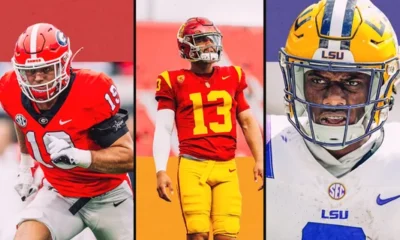

College Football
/ 8 hours ago2024 Back Sports Page NFL Mock Draft
2024 BSP Mock Draft Last year, we let all of our football writers become...
By Mason Wood -
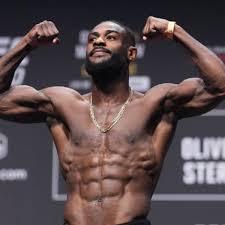

MMA
/ 13 hours agoNext Chapter: Aljamain Sterling
On a historic night for the UFC, one of the more decorated champions of...
By Brandon Li -
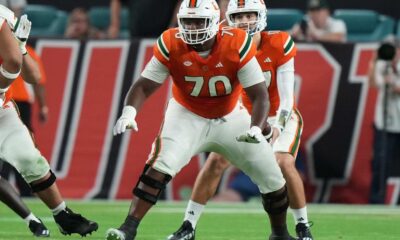

College Football
/ 17 hours agoNFL Draft 2024 Scouting Report: Javion Cohen, OG, Miami
Javion Cohen, OG, Miami Height: 6’4” Weight: 319 Arm Length: 33 ⅞ 40-Yard...
-
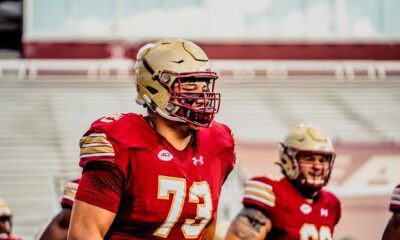

College Football
/ 17 hours agoNFL Draft 2024 Scouting Report: Christian Mahogany, OG, Boston College
Christian Mahogany, OG, Boston College Height: 6’3” Weight: 314 Arm Length: 33 ½ ...
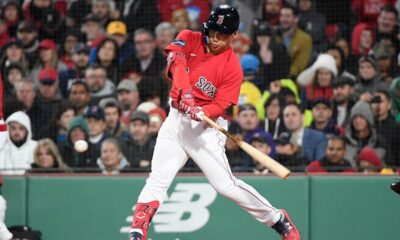

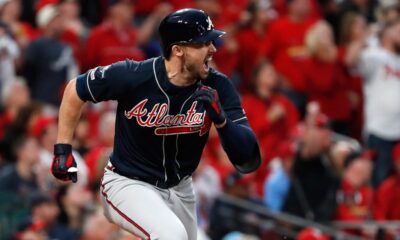

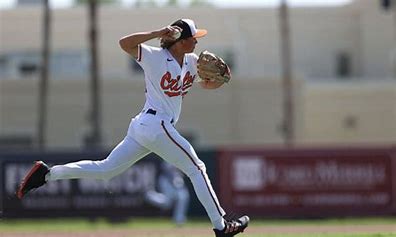







1 Comment